Understanding Renewable Resources: The Top Producers of Renewable Energy
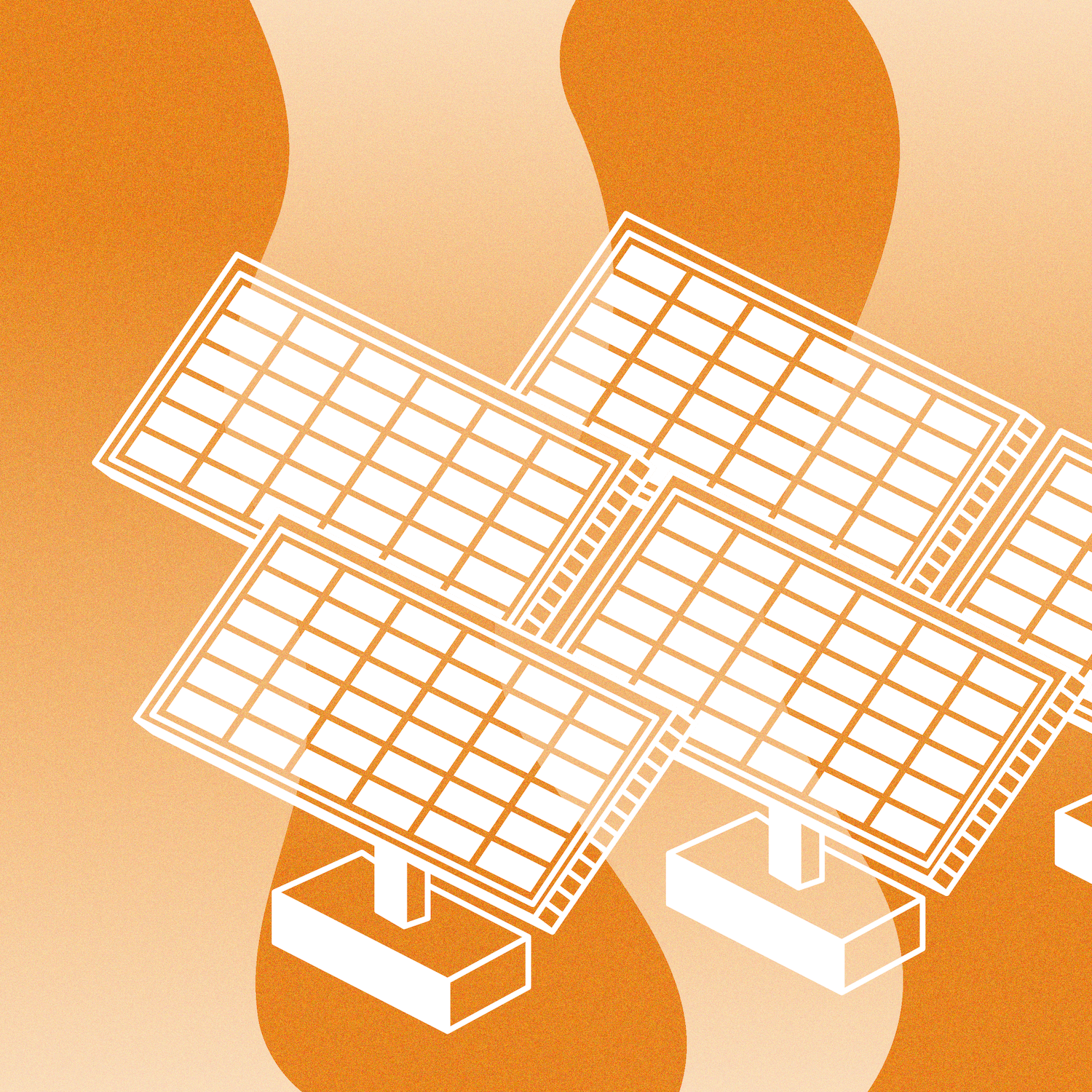
As Earth’s population grows and new technological advances arise, developing clean, efficient energy sources is crucial. The oil, coal, and natural gas currently accounting for 60% of Earth’s energy usage are finite resources, and when they are burned they create pollution, which has been linked to climate change. We need to make a change, and renewable energy sources will be key to this effort. But what is a renewable resource?
Renewable energy resources are those that don’t run out—or at least won’t run out for millions of years. For a more sustainable future, we need to use abundant, renewable resources like sunlight, wind, water, biological fuels, and geothermal energy.
In this article, we’ll explore what makes a renewable resource as well as how each one works and the advantages and disadvantages of each for the individual homeowner who wants to adopt clean, renewable power.
What is a Renewable Resource?
Renewable resources are abundant sources of power which can be harnessed to create usable energy. Many have been providing humankind with energy for millennia—such as the ancient Greeks who used water to mill grain thousands of years ago. Today, new scientific research is constantly refining these energy processes, and the highest-producing modern renewable energy resources include:
- Solar power
- Hydropower
- Wind power
- Bio power
- Geothermal power
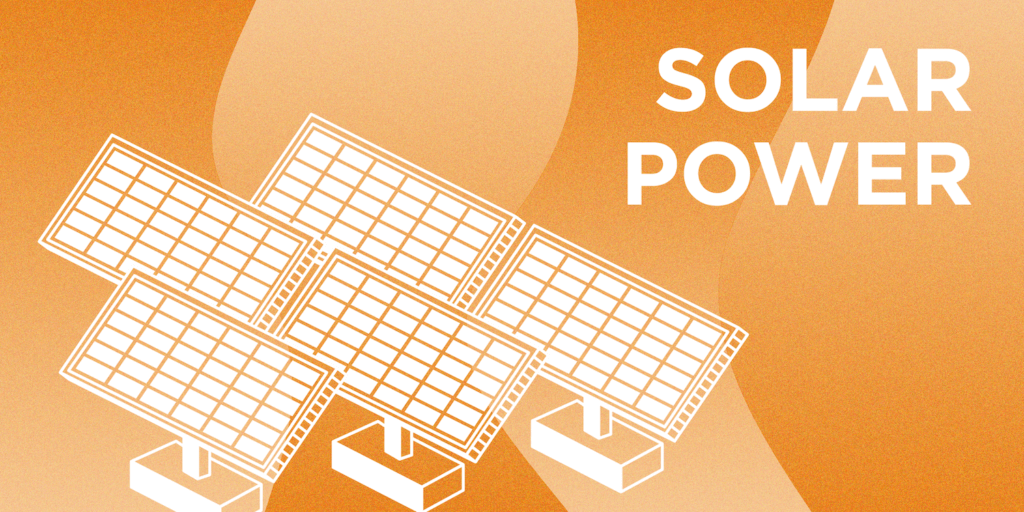
Powered by Sunlight: Solar Power
Solar power accounts for 4.5% of all energy worldwide and is the fastest-growing renewable industry, accounting for 75% of the increase in energy generation from renewable sources. It is also the most accessible renewable energy resource for the everyday individual. While most renewable resources require large plants or prohibitively expensive equipment, solar panels can be installed on single-family homes.
There are two different kinds of solar production: photovoltaic (PV) and concentrating solar power (CSP). Photovoltaic solar production is the most common method used for solar panels, and the technology operates on principles similar to photosynthesis in plants. Light photons hit negatively-charged panels and knock electrons loose, creating a flow of energy which can then be harnessed to power homes and businesses. Since the sun is always sending energy to the Earth—including on cloudy days—there is no end to the availability of this resource.
Solar power technology has saved homeowners upward of $20,000 since installation. If solar power is part of your journey to more sustainable energy, Blue Raven Solar can guide you through the solar installation process. The first step is to apply for a cost-free, obligation-free consultation to explore how solar can work for you.
Quick Solar Facts:
- By 2050, solar panels will likely have reduced in cost by 700% with ongoing research and development.
- The solar industry has the potential to employ 18 million people in 2050.
- If solar (coupled with wind power) continues to grow at its current rate (or even a significantly lower rate) renewable energy will cover the whole world’s electricity by 2050.
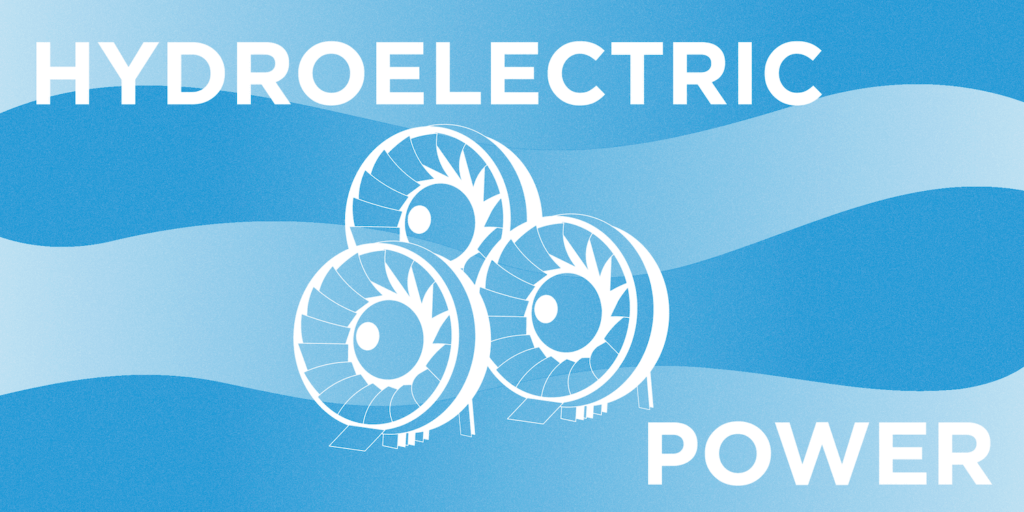
Powered by Waves: Hydropower
Hydropower creates 54% of global renewable energy and 15.9% of the world’s energy overall. Hydropower is a cheap, clean source of energy and has helped the world avoid 100 billion tons of carbon dioxide in the past 50 years. However, mass adoption on an individual level is limited as it requires access to water and large plants.
Hydropower is created when water flows through the generating plant and moves turbines, which turn on a generator to create power. There are three types of hydropower plants:
- Run-of-the-river or diversion systems use the natural flow of water to create power.
- Storage or impoundment systems use reservoirs and dams, releasing water at different rates through the dam, as needed.
- Pumped-storage hydropower systems work like a battery, moving water from higher- or lower-elevation reservoirs depending on need. When energy needs are low, these systems use other energy sources to move water to a higher elevation level. When needs are high, stored energy can be moved back to the lower elevation, creating energy as it flows.
The Earth is covered in water, and harnessing this resource can help make the world cleaner and more efficient. Over 2,000 dams across the United States of America produce electricity. Yet, with more than 80,000 dams total in the country, there is much more potential for clean energy generation nationwide.
Quick Hydropower Facts:
- In 2050, hydropower could potentially support more than 195,000 jobs in the United States of America.
- Hydropower could help to reduce greenhouse gas emissions by 5.6 gigatons by 2050, which is equal to nearly 1.2 billion passenger cars driven in a year, saving $209 billion by avoiding global damages from climate change.
- By 2050, hydropower can save 30 trillion gallons of water, which is about 45 million Olympic-sized swimming pools.
- Wind and solar power can be further integrated into new pumped-storage facilities and the national power grid to provide greater flexibility, reliability, and reserve capacity.
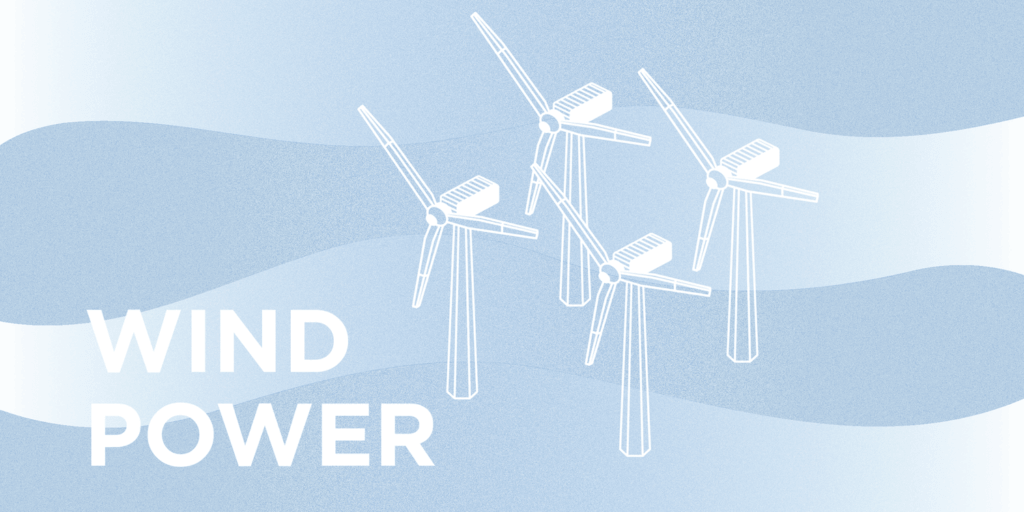
Powered by Air: Wind Power
Wind power makes up 24% of renewable energy and 5.9% of all energy production. It is pollution-free and continues to grow as an industry and resource for green living.
To create energy from wind, windmill turbines—which can be over 60 meters long—turn as they are blown, powering a generator. The principle is similar to hydropower, but instead of water moving the turbines, powerful wind forces blow the turbines around. Offshore turbines can create up to four times more electricity than the nation’s current electrical capacity.
The United States of America recently passed legislation allowing for the first major offshore wind project in U.S. waters. With this development, wind energy from the Western Hemisphere is about to see a major boost!
Quick Wind Power Facts:
- By 2050, every state could potentially have viable wind energy systems powering their electricity grids, supporting 600,000 jobs.
- $280 billion of consumer money will be saved by reducing the nation’s exposure to price spikes and disruptions in electricity supply with long-term pricing of wind-generated power.
- Wind energy helps to preserve water. Projections estimate by 2050, 250 billion gallons of water will be saved, equal to 400,000 Olympic-sized swimming pools.
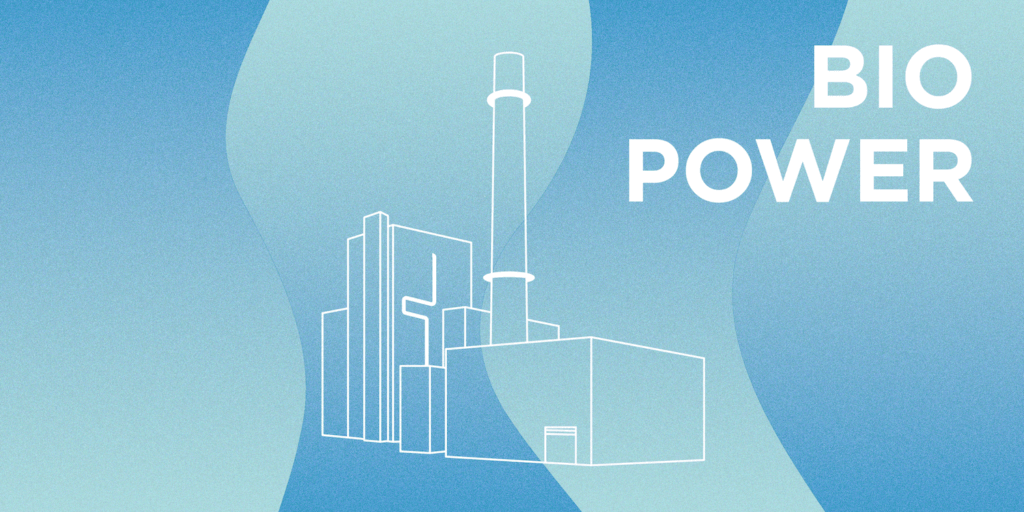
Powered by Life: Bio Power
Bio power uses wood pellets, agricultural byproducts, algae, and other biological materials to create 8% of the world’s renewable energy. These biological materials generate energy through:
- Burning
- Decomposition
- Conversion to gas or fuel through gasification or pyrolysis
Burning creates energy in a similar manner to wind and hydropower—the biomass is burned into a boiler, and the high-pressure steam created pushes turbines to power a generator. Often, this process is coupled with coal to produce energy more efficiently while using less coal.
Decomposition works with organic waste collected in digesters (oxygen-free tanks). The material is decomposed by anaerobic bacteria. These bacteria produce methane and other byproducts, which form a renewable natural gas. This gas is then purified and used to create power.
Conversion through gasification exposes the biomass material to high temperatures with low oxygen levels. This produces a synthetic gas made mostly of hydrogen and carbon monoxide, which is then burned in a boiler or can replace natural gas in a combined-cycle gas turbine.
In conversion through pyrolysis, the biomass is heated at a lower temperature with zero oxygen. This creates a bio-oil, which is then used in place of fuel oil or diesel in furnaces, turbines, and engines.
Bio power is a growing industry, with new research leading to improved processes on a regular basis.
Quick Bio Power Facts:
- Biomass production is expected to nearly double by 2050.
- In developing countries, there are over 160 million people using biomass energy for electricity.
- By 2050, predictions indicate 60% of industrial fuels and heat will come from biomass.
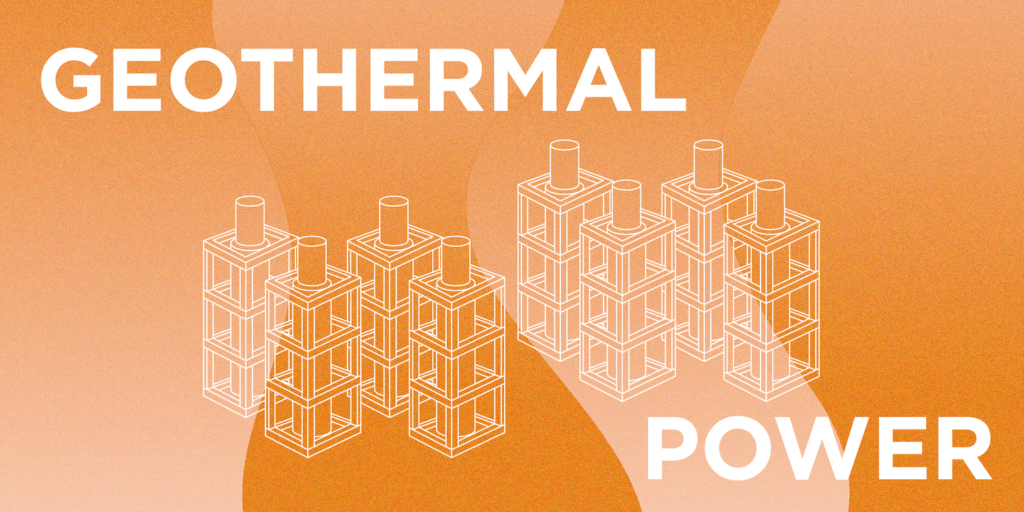
Powered by the Earth: Geothermal Energy
Geothermal energy is less common and not used as often as other renewable energy resources, creating only 1.4% of renewable energy. Its low carbon emissions make it a beneficial addition to the arsenal of renewable energy strategies.
Geothermal energy is created by water flowing through the ground and creating heat. Typically one-third of the energy created becomes electricity while the other two-thirds become direct heat. The process happens through these steps:
- Wells are dug one to two miles deep. Hot water from these wells is then pumped to the surface under high pressure.
- As the heated water nears the surface, the pressure drops. This allows the hot water to turn into steam.
- The steam pushes turbines, which power generators.
- After the steam goes through the turbine, it is stored and cooled, allowing it to turn back into water.
- The cooled water drains back into the earth, and the process starts over.
Knowledge about geothermal energy continues to increase, and as it is better understood and researched, it could become a more effective source of renewable energy.
Quick Geothermal Energy Facts:
- The geothermal industry’s installed capacity could reach 60 gigawatts by 2050, bringing its output to 8% of renewable energy.
- Some models show the industry’s potential to supply direct heating and cooling for 28 million households using geothermal heat pumps by 2050.
Renewable Energy Resources are Essential for Our Future
Using renewable resources and minimizing our use of fossil fuels is necessary to keep the planet safe and clean. Energy sources like solar power, hydropower, wind power, bio power, and geothermal power give us tools to protect the Earth while also creating diversification for greater energy security and to protect economies and consumers from controlling interests.
Many of these sources require commercial plants and large investments, but solar power is readily accessible to individual consumers and homeowners. Blue Raven Solar can help you join the renewable energy movement by installing rooftop solar panels.
If you want to be part of the change, contact Blue Raven Solar today for a no-cost, no-obligation consultation to see how solar power can change your energy costs.
Sources:
- https://www.power-technology.com/features/featurethe-worlds-most-used-renewable-power-sources-4160168/?utm_source=Army%20Technology&utm_medium=website&utm_campaign=Must%20Read&utm_content=Image
- https://www.energy.gov/articles/top-10-things-you-didnt-know-about-hydropower#:~:text=Hydropower%20is%20one%20of%20the,air%20pollution%20or%20toxic%20byproducts
- https://www.hydropower.org/iha/discover-facts-about-hydropower
- https://www.starenergypartners.com/blog/electricity-company/21-interesting-facts-wind-energy/
- https://news.energysage.com/8-facts-solar-energy/
- https://www.energy.gov/eere/bioenergy/bioenergy-basics
- https://www.energy.gov/eere/articles/5-things-know-about-geothermal-power
- https://www.energy.gov/articles/hydropower-vision-new-report-highlights-future-pathways-us-hydropower
- https://sitn.hms.harvard.edu/flash/2019/future-solar-bright/#:~:text=In%20the%20immediate%20future%2C%20silicon,at%20least%20700%25%20by%202050.
- https://www.smart-energy.com/renewable-energy/solar-power-to-cover-a-quarter-of-global-power-by-2050/
- https://wwfeu.awsassets.panda.org/downloads/101223_energy_report_final_print_2.pdf
- https://www.chooseenergy.com/news/article/geothermal-energy-could-expand-2050/#:~:text=According%20to%20the%20most%20optimistic,current%20level%20of%200.4%20percent.
- https://e360.yale.edu/features/can-geothermal-power-play-a-key-role-in-the-energy-transition



Sorry, the comment form is closed at this time.